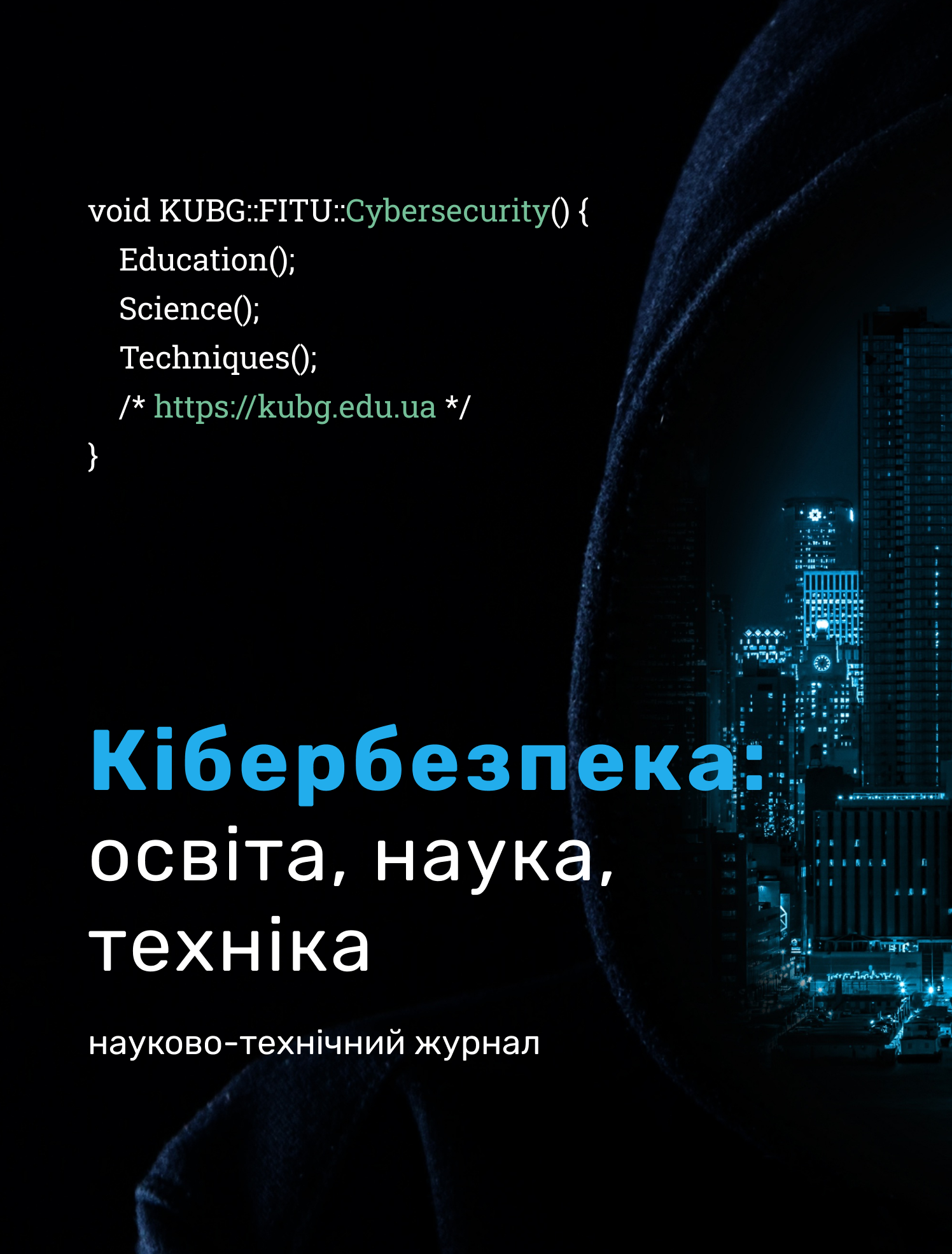MODERN PERSPECTIVES OF APPLYING THE CONCEPT OF ZERO TRUST IN BUILDING A CORPORATE INFORMATION SECURITY POLICY
DOI:
https://doi.org/10.28925/2663-4023.2023.21.223233Keywords:
information security; security policy; zero trust concept; zero trust architecture; access control; access subject; identification; security perimeter; authentication; cloud environment; byodAbstract
Modern businesses have undergone significant changes as a result of digital advances and the recent COVID-19 pandemic. In particular, there has been an increase in the number of employees working remotely, using personal digital devices alongside corporate devices, and the enterprise itself moving business processes to the cloud or using hybrid environments that combine both cloud and on-premises services. Taken together, this leads to increased interaction between devices and services over open networks, creating new risks of cyber-attack. It is this situation that has led to the relevance and direction of this research. The paper analyzes the current state of effectiveness of the application of enterprise information security policy, in particular, identifies the main limitations associated with the difficulty, and sometimes impossibility, to control the behavioral aspects of enterprise employees to comply with the basic provisions of security policy and general information security. The basic principles of the Zero Trust conceptual approach are analyzed and the main advantages of its application in the formation of the security policy as a strategic approach to ensuring the information security of the enterprise in the conditions of dynamic growth of new threats and transformation of modern business are determined. At the same time, it is established that one of the key components of the Zero Trust architecture is the access control system. As a result, forming the prospects of applying the concept of Zero Trust in the construction and implementation of the information security policy, the necessity of conducting an accompanying study of the effectiveness of modern mechanisms of identification/authentication of access subjects was determined.
Downloads
References
Albrechtsen, E. (2007). A qualitative study of users' view on information security. Computers & Security, 26(4), 276–289. https://doi.org/10.1016/j.cose.2006.11.004
Bosch, C., Eloff, J., & Carroll, J. (1993). International Standards and Organizational Security Needs: Bridging the Gap. Proceedings of the IFIP TC11 Ninth International Conference on Information Security, Amsterdam, 171-183.
Bosworth, S., Kabay, M. E., & Whyne, E. (Ред.). (2012). Computer Security Handbook. John Wiley & Sons, Inc. https://doi.org/10.1002/9781118820650
Buck, C., Olenberger, C., Schweizer, A., Völter, F., & Eymann, T. (2021). Never trust, always verify: A multivocal literature review on current knowledge and research gaps of zero-trust. Computers & Security, 110, 102436. https://doi.org/10.1016/j.cose.2021.102436
Bulgurcu, Cavusoglu & Benbasat. (2010). Information Security Policy Compliance: An Empirical Study of Rationality-Based Beliefs and Information Security Awareness. MIS Quarterly, 34(3), 523. https://doi.org/10.2307/25750690
Chen, Y., Hu, H.-c., & Cheng, G.-z. (2019). Design and implementation of a novel enterprise network defense system bymaneuveringmulti-dimensional network properties. Frontiers of Information Technology & Electronic Engineering, 20(2), 238–252. https://doi.org/10.1631/fitee.1800516
Cybercrime statistics. (2023). Surfshark. https://surfshark.com/research/data-breach-impact/statistics
ENISA Threat Landscape 2021. (2021). ENISA. https://www.enisa.europa.eu/publications/enisa-threat-landscape-2021
Herath, T., & Rao, H. R. (2009). Protection motivation and deterrence: a framework for security policy compliance in organisations. European Journal of Information Systems, 18(2), 106–125. https://doi.org/10.1057/ejis.2009.6
Information technology. Security techniques. Information security management systems. Overview and vocabulary (ISO/IEC 27000:2018). (2018). https://www.iso.org/standard/73906.html
Mandal, S., Khan, D. A., & Jain, S. (2021). Cloud-Based Zero Trust Access Control Policy: An Approach to Support Work-From-Home Driven by COVID-19 Pandemic. New Generation Computing. https://doi.org/10.1007/s00354-021-00130-6
Peltier, T. R. (2002). Information security policies, procedures, and standards: Guidelines for effective information security management. Auerbach.
Puhakainen, P. (2006). A design theory for information security awareness [Doctoral thesis, University of Oulu]. http://urn.fi/urn:isbn:9514281144
Rose, S., Borchert, O., Mitchell, S., & Connelly, S. (2020). Zero Trust Architecture. National Institute of Standards and Technology. https://doi.org/10.6028/nist.sp.800-207
Shoraka, B. (2011). An Empirical Investigation of the Economic Value of Information Security Management System Standards [NSUWorks]. http://nsuworks.nova.edu/gscis_etd/304
Soo Hoo, K. J. (2000). How much is enough? A risk-management approach to computer security. In Proceedings of the Workshop on Economics and Information Security, (pp. 1–99).
Published
How to Cite
Issue
Section
License
Copyright (c) 2023 Максим Ворохоб, Роман Киричок, Владислав Яскевич, Юрій Добришин, Сергій Сидоренко

This work is licensed under a Creative Commons Attribution-NonCommercial-ShareAlike 4.0 International License.




